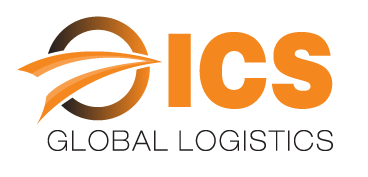Supply chain optimization is crucial for businesses to enhance efficiency, reduce costs, and meet customer demands. With the advent of artificial intelligence (AI), supply chain management in Australia has witnessed a transformative shift. In this blog, we will explore the impact of AI on supply chain optimization and its role in revolutionizing supply chain management practices.
Role of AI in supply chain optimization
Understanding AI’s Impact on Supply Chain Optimization:
AI has revolutionized supply chain management by automating processes and improving decision-making. By harnessing AI technologies, businesses in Australia can gain a competitive edge in an increasingly complex and demanding market.
AI-powered Demand Forecasting and Inventory Management:
AI algorithms enable accurate demand forecasting by analyzing historical data, market trends, and customer behavior. This empowers businesses to optimize inventory levels, reduce stockouts, and minimize excess inventory, ensuring efficient supply chain management in Australia.
Optimizing Supply Chain Routing and Logistics with AI:
AI algorithms optimize transportation routes, considering variables such as distance, traffic, and delivery constraints. By leveraging AI in routing and logistics, businesses can reduce transportation costs, improve delivery timelines, and streamline supply chain operations across Australia’s vast geography.
Predictive Analytics: Leveraging AI for Accurate Demand Planning:
AI-driven predictive analytics analyze various data sources to forecast demand accurately. By considering factors such as market trends and external influences, businesses can make data-driven decisions, align their supply chain strategies, and optimize demand planning for the Australian market.
AI-driven Warehouse Management: Streamlining Operations and Inventory Control:
AI technologies, such as robotic process automation (RPA) and machine learning, streamline warehouse operations. Automated picking systems, intelligent inventory control, and real-time tracking optimize order fulfillment, reduce errors, and enhance inventory management for businesses across Australia.
Enhancing Supply Chain Visibility through AI-driven Analytics:
AI-powered analytics provide real-time insights into the entire supply chain process. By integrating data from multiple sources, businesses can gain visibility into inventory levels, production schedules, and transportation status. This transparency enables proactive decision-making and swift responses to disruptions, ensuring efficient supply chain management in Australia.
AI-based Supplier Management: Improving Sourcing and Procurement:
AI algorithms analyze supplier performance, market conditions, and historical data to optimize sourcing and procurement processes. By identifying reliable suppliers, negotiating favorable contracts, and managing risks, businesses can strengthen their supply chain network and ensure reliable sourcing across Australia.
Intelligent Pricing Strategies: AI’s Role in Dynamic Pricing and Revenue Optimization:
AI-driven pricing algorithms analyze market dynamics, competitor prices, and customer behavior. By leveraging AI in pricing strategies, businesses can dynamically adjust prices, maximize revenue, respond quickly to market fluctuations, and maintain competitiveness in the Australian market.
AI-powered Risk Management: Identifying and Mitigating Supply Chain Risks:
AI analyzes vast amounts of data in real-time to identify potential risks and disruptions in the supply chain. By proactively detecting risks such as supplier disruptions, natural disasters, or market shifts, businesses can implement risk mitigation strategies and ensure a resilient supply chain across Australia.
Collaborative Robotics and AI: Transforming Manufacturing and Assembly in the Supply Chain:
AI-powered collaborative robotics automate manufacturing and assembly processes. This improves production efficiency, reduces errors, and enhances overall productivity in the supply chain. Collaborative robotics and AI technology play a significant role in transforming the manufacturing landscape in Australia.
AI-driven Predictive Maintenance: Optimizing Equipment Performance and Reliability:
AI algorithms analyze equipment sensor data to predict maintenance needs and optimize equipment performance. By implementing AI-driven predictive maintenance, businesses can minimize downtime, reduce costs, and ensure reliable equipment performance throughout their supply chain operations in Australia.
The Future of AI in Supply Chain Optimization: Trends and Innovations:
The future of AI in supply chain optimization holds promising trends and innovations. Technologies like natural language processing, computer vision, and autonomous vehicles will further revolutionize supply chain management in Australia. Machine learning models will become more sophisticated, enabling predictive analytics and autonomous decision-making, paving the way for increased efficiency and competitiveness.
Conclusion:
In conclusion, the role of artificial intelligence in supply chain optimization cannot be overstated. As businesses in the digital age strive to stay competitive and meet evolving customer demands, embracing AI-driven solutions will be crucial. By harnessing the power of AI, businesses can gain a competitive edge, make data-driven decisions, and unlock new levels of supply chain optimization. The future of supply chain management lies in the seamless integration of AI technologies, and those who embrace this transformation will be at the forefront of innovation and success in the dynamic global marketplace.

